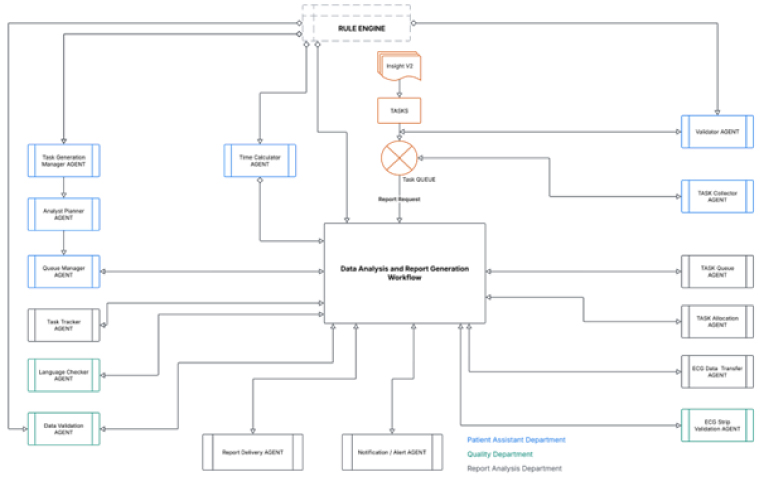-
What We Do
What we do
- Verticals
- Solutions
- Who We Are
Multi-department reports are crucial for the smooth functioning of a company. These reports offer a comprehensive overview of a company’s performance, enabling decision-makers to make informed, data-driven improvements. They are crucial for optimizing operations, enhancing efficiency, and improving customer service.
While these reports are helpful for company growth, generating them can be a challenge. Here are some challenges that companies typically face while generating the reports:
However, companies can overcome these challenges by using agentic AI.
Let’s examine how they can do it with an example of one of our clients, a leading player in the Ambulatory Cardiac Monitoring space in India.
The client, a leading player in Ambulatory Cardiac Monitoring, was operating on a multi-departmental service model. This meant that there had to be seamless collaboration between the Sales, Patient Assistance, Analysis, and Quality teams. One of the core functions that needed the most collaboration was “Report Delivery.”
For example, the patient assistance team would manage SLA-based and on-demand report delivery, patient queries, and act as an interface for the analysis team.
The analysis team had to analyze the data and create reports, while the quality department would do a post-quality analysis of the reports delivered the previous day.
Each department had to adhere strictly to the SLAs and on-demand requests. However, the client faced multiple operational challenges in generating these reports.
To minimize errors and enable the departments to generate over 15,000 reports each month, the client decided to automate the process.
We deployed agentic AI to help the client streamline workflows, automate repetitive tasks, and enhance cross-departmental coordination. We implemented LangGraph – an open-source AI agent framework designed to build, deploy, and manage complex generative AI agent workflows. This framework enables the creation of agents that can allocate and manage tasks and maintain the quality of multi-departmental reports.
Here’s a glimpse of how the process works:

While the implementation is still underway, the client is already observing improvements in efficiency, quality of reports, and resource utilization. The teams are on their way to achieving the goal of publishing 15,000 reports per month.
Generating multi-department reports can be challenging, especially when there are multiple stakeholders involved. To add to the woes, manual intervention delays the report generation process and leads to errors. However, as seen in the case of our client, automating the process with agentic AI can help companies generate multi-department reports effortlessly and without mistakes.
Need help in deploying agentic AI for activities like generating complex reports? Get in touch with us for more information.